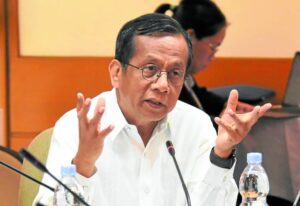MANILA, Philippines — Compared to its Asian counterparts, the Philippines is lagging behind in terms of foreign direct investments, lawyer Amee Zarraga-Fabros of the Subic-Clark Alliance for Development said on Tuesday during a Senate Committee on Economic Affairs hearing.
Speaking during the hearing on the Bulacan Airport City Special Economic Zone and Freeport Act, Zarraga-Fabros particularly cited the booming economy of Vietnam, saying it is now “four or five times” ahead of the Philippines.
READ: PH among least attractive to foreign investors
“Ang lagi nilang ipinagmamalaki sa Pilipinas sila pupunta because we are an English speaking country — masisipag tayo. Pero masisipag rin ang mga Vietnamese, so ngayon ang nangyari pansinin niyo po ang figures that we got from publicly available data, four times or five times more ang abante ang Vietnam sa atin,” she said.
(We always say investors will come to the Philippines because we are an English-speaking country and that we are diligent. But Vietnamese are also diligent, and now take a look at the figures we got from publicly available data. They are already four or five times ahead of us.)
According to Zarraga-Fabros, Vietnam logged more than $27 billion in foreign direct investments (FDIs) and $700 billion in imports and exports in 2022.
In the same period, the Philippines recorded only $9.2 billion in FDIs and $216 billion in import and export.
Based on Zarraga-Fabros’ presentation during the hearing, Vietnam’s FDI inflows are expected to continue to increase, given the country’s efforts in embracing foreign businesses through special economic zones.
This prompted her to emphasize the need to build the Bulacan Special Economic Zone — an area designed to attract foreign investment, providing livelihood and employment opportunities to people in nearby localities.
READ: Bongbong Marcos set to sign revised Bulacan ecozone bill into law — Salceda
Zarraga-Fabros said the Bulacan Ecozone will be developed by Bulacan Airport City Special Economic Zone and Freeport (BACSEZFA), adding that it will be equipped with facilities and infrastructure needed to “attract investments and generate linkage industries and employment opportunities.”
“The vision is to have clustering. One area will be dedicated to universities…an area will be all industrial depending on the terrain and the complexion of the soil,” she said.
She then presented a master plan showing that the Bulacan Ecozone will be divided into the following clusters: Airport City, Waterfront City, Agropolis, Consular City, Financial City, Innovation City, and Marina City.


